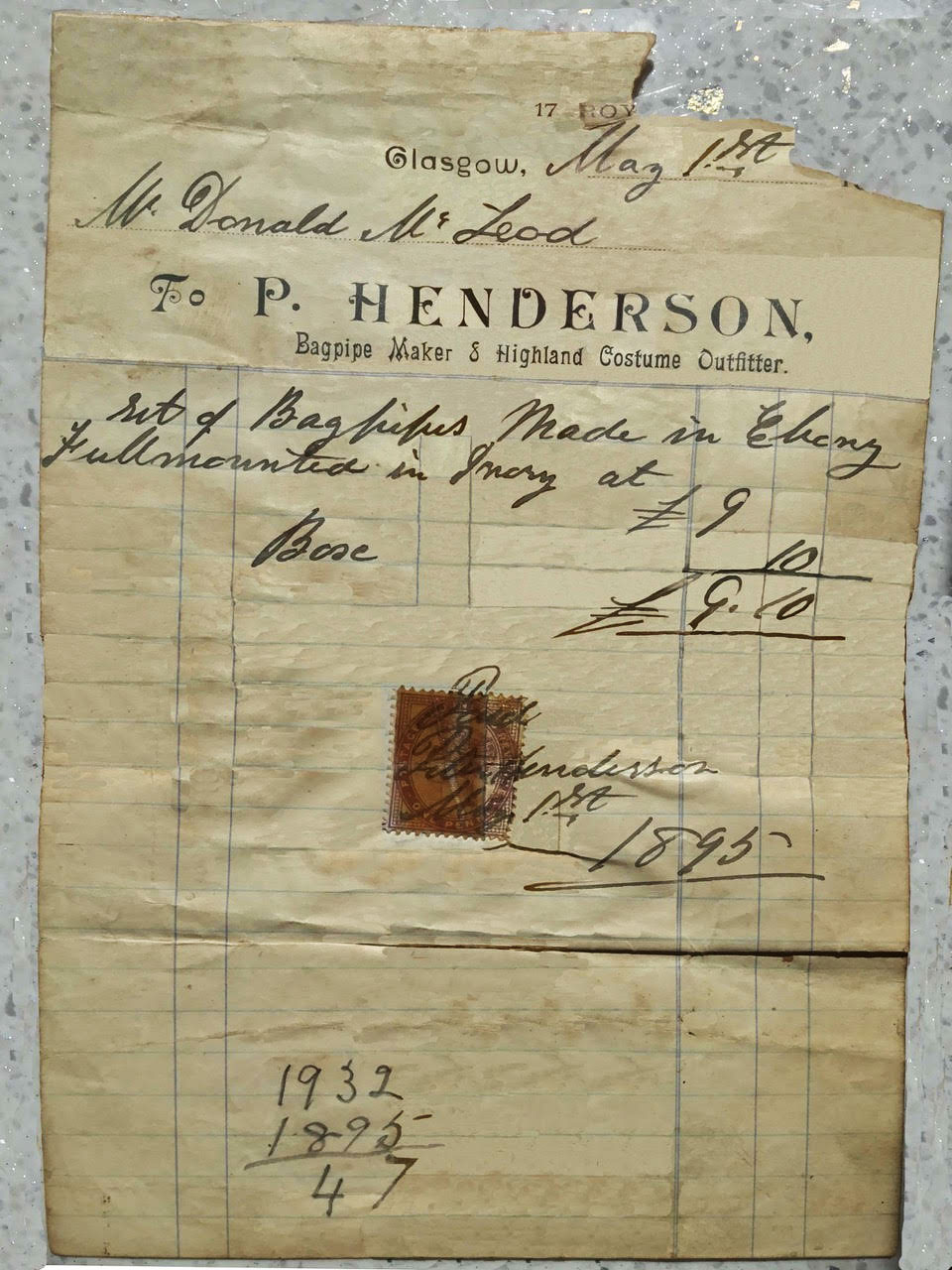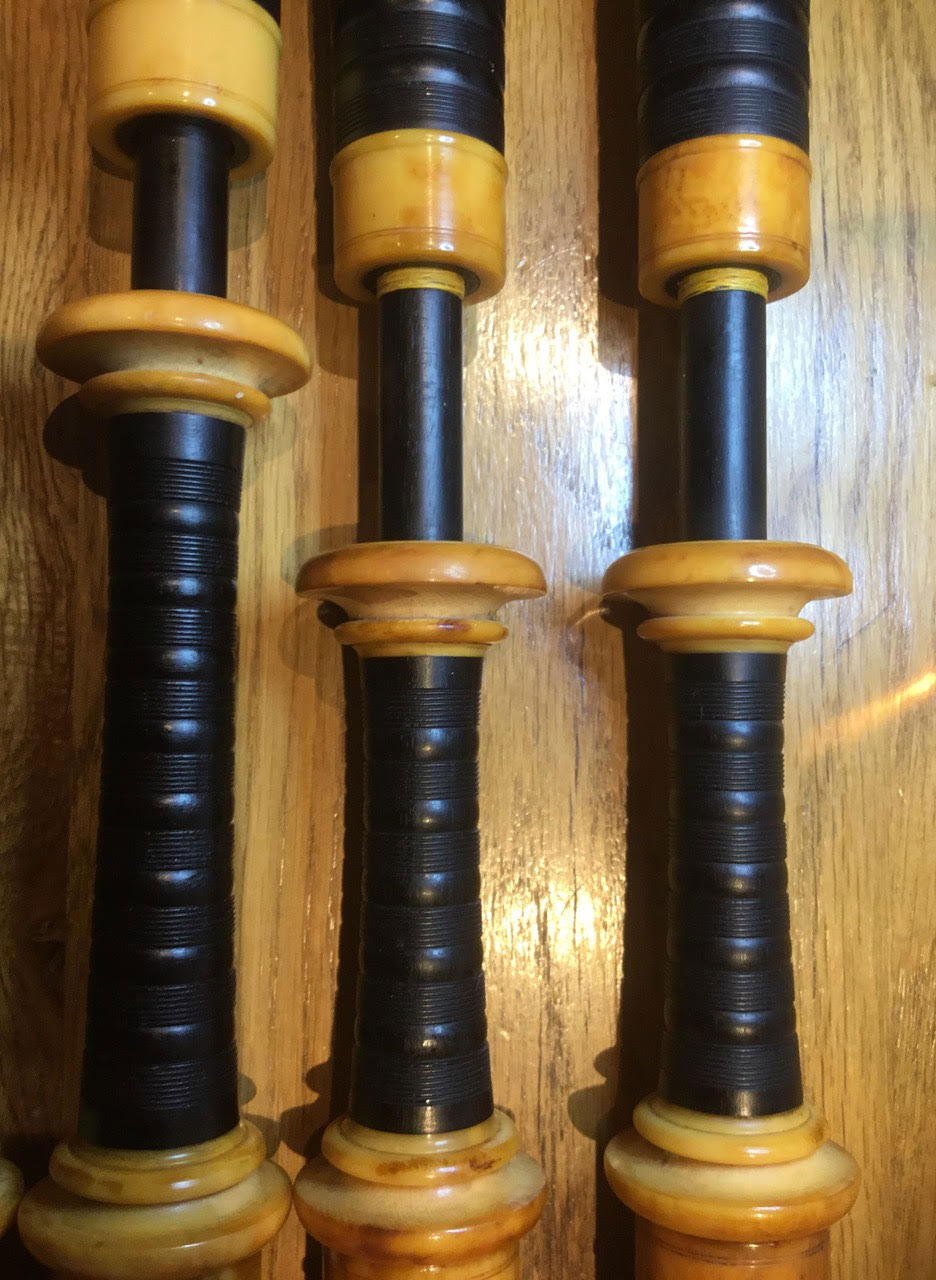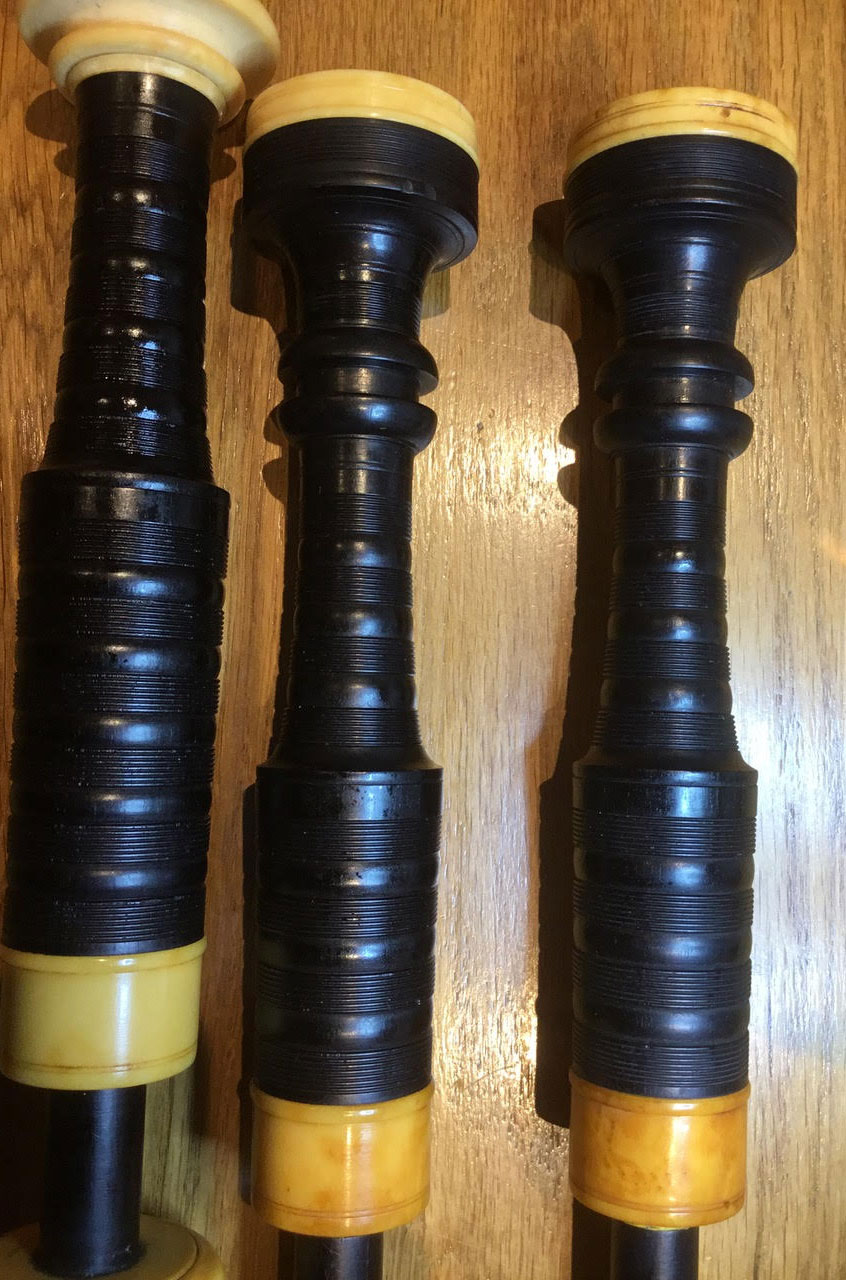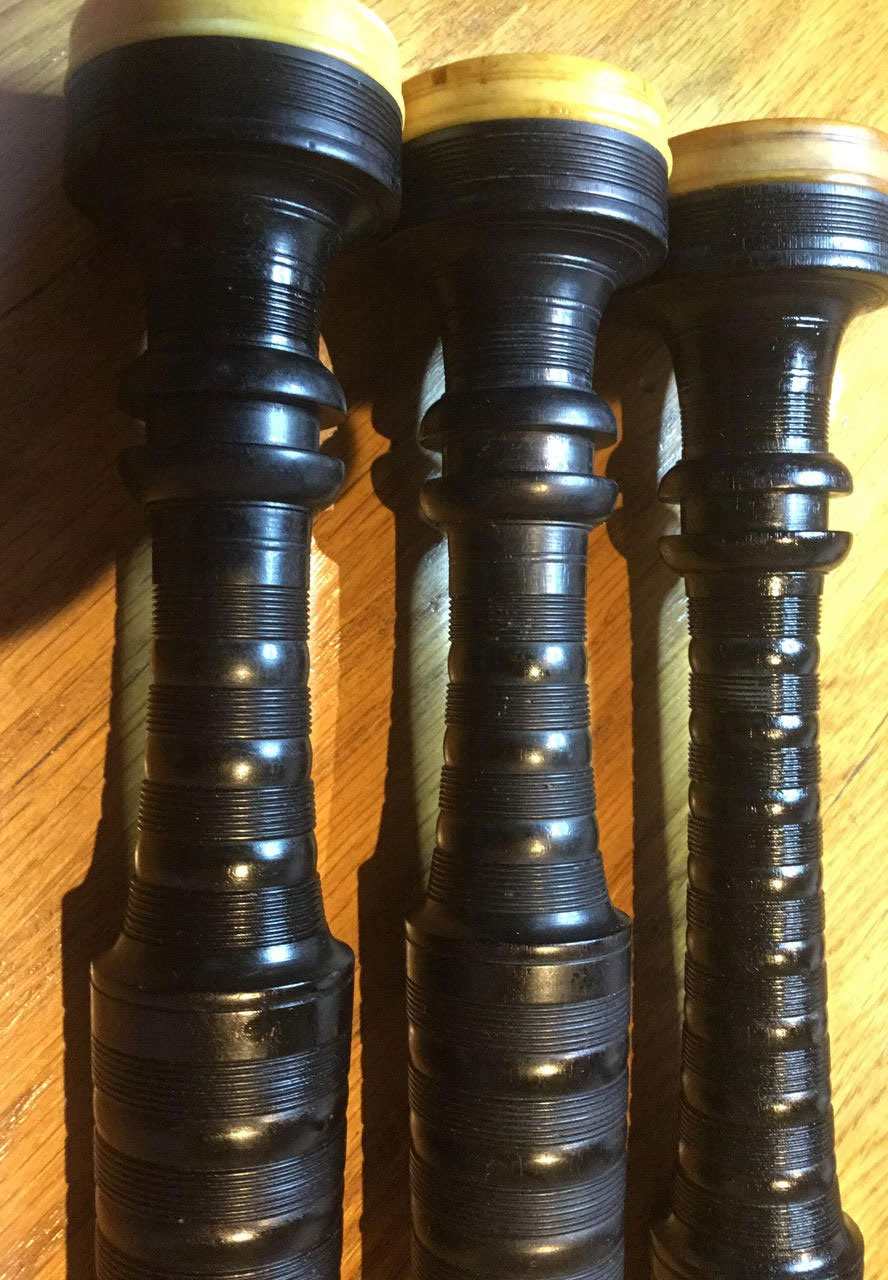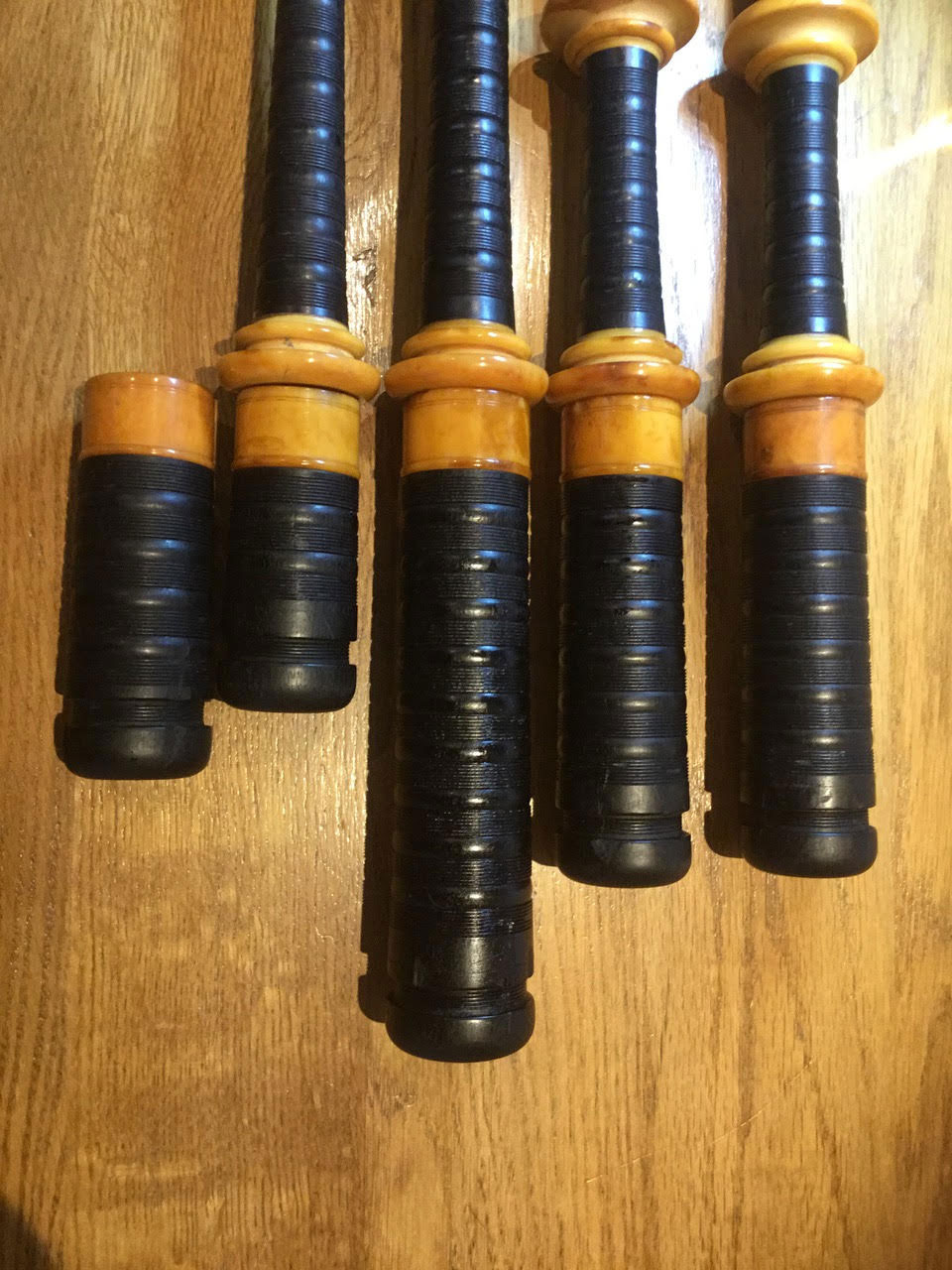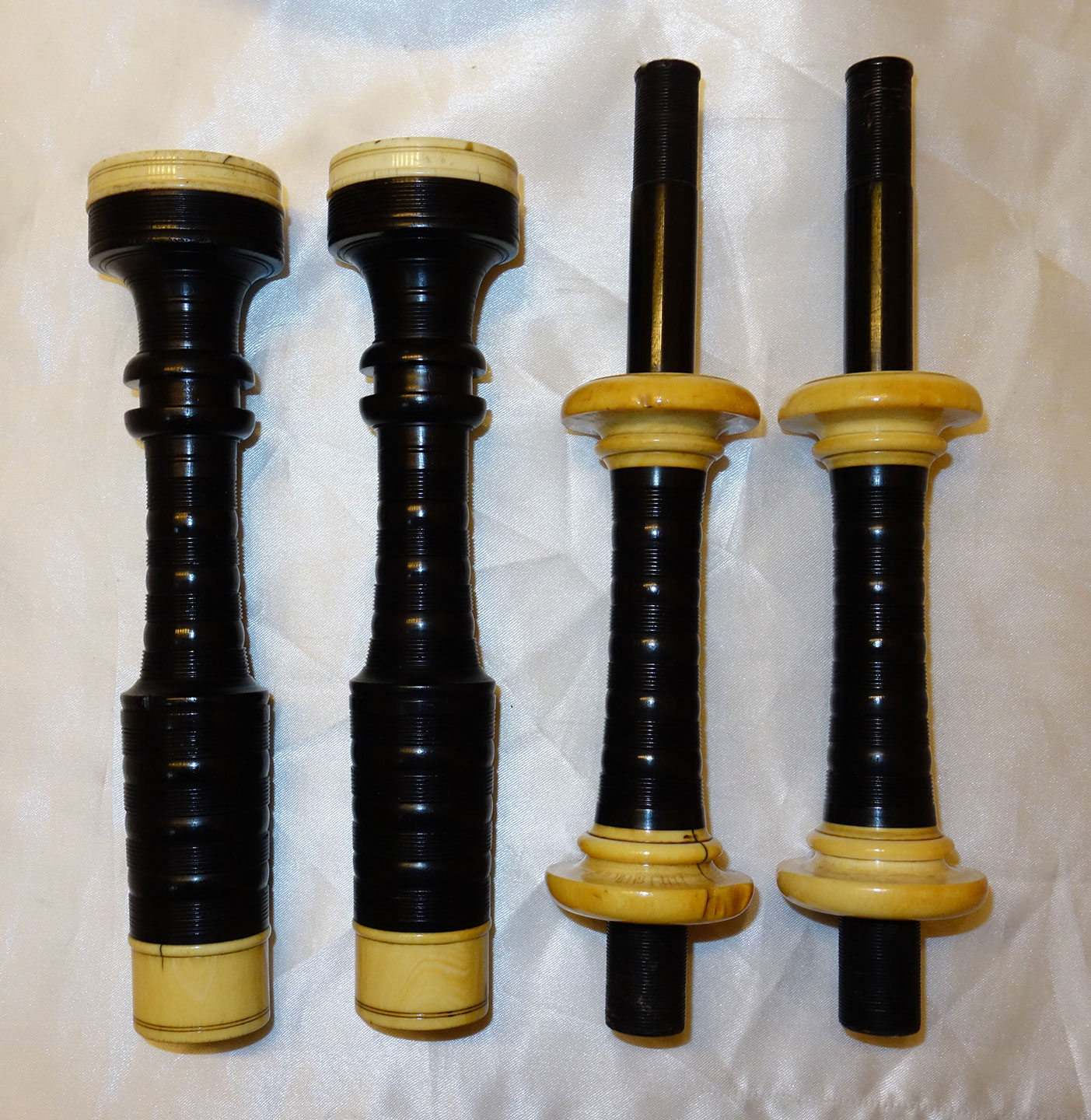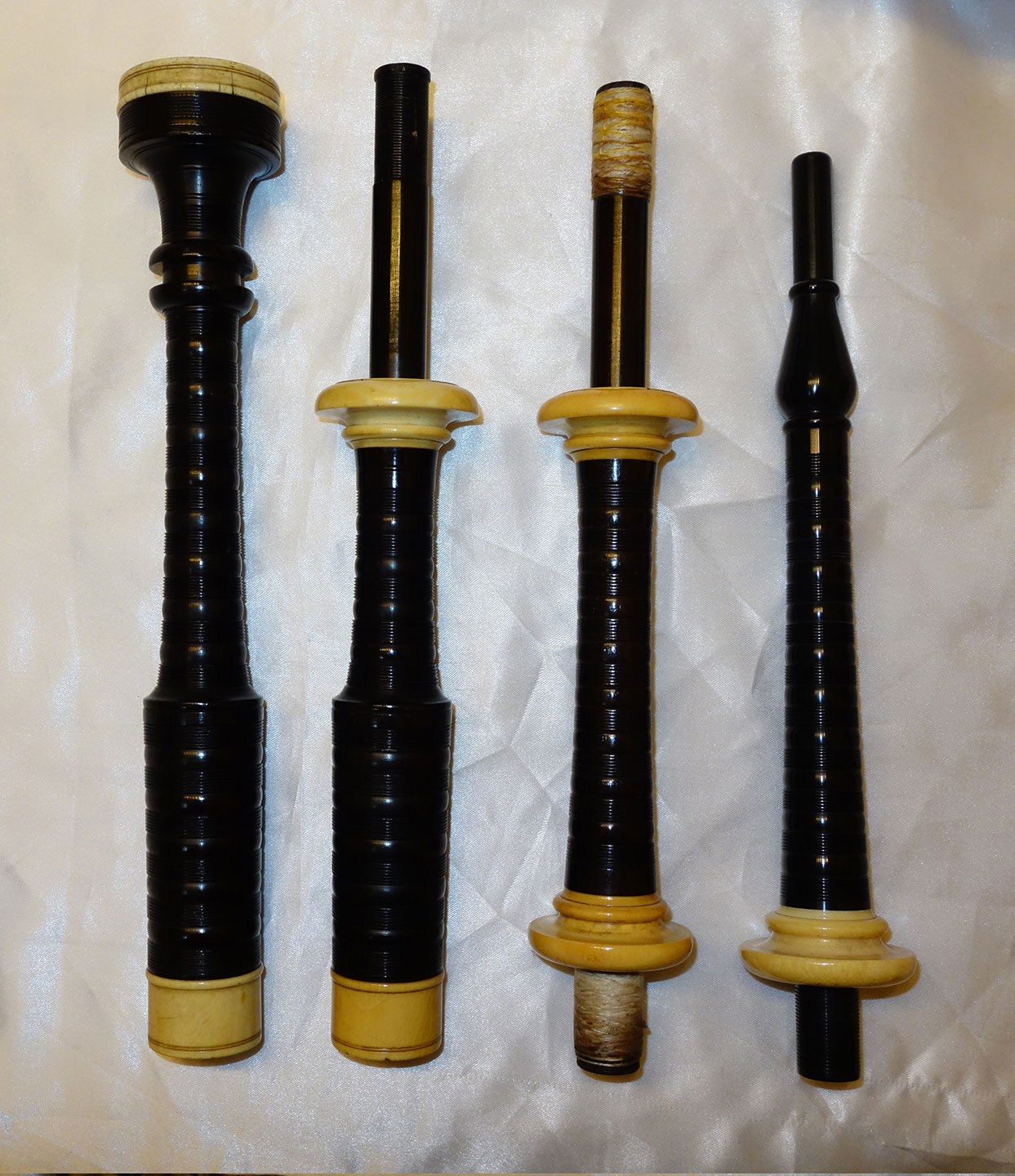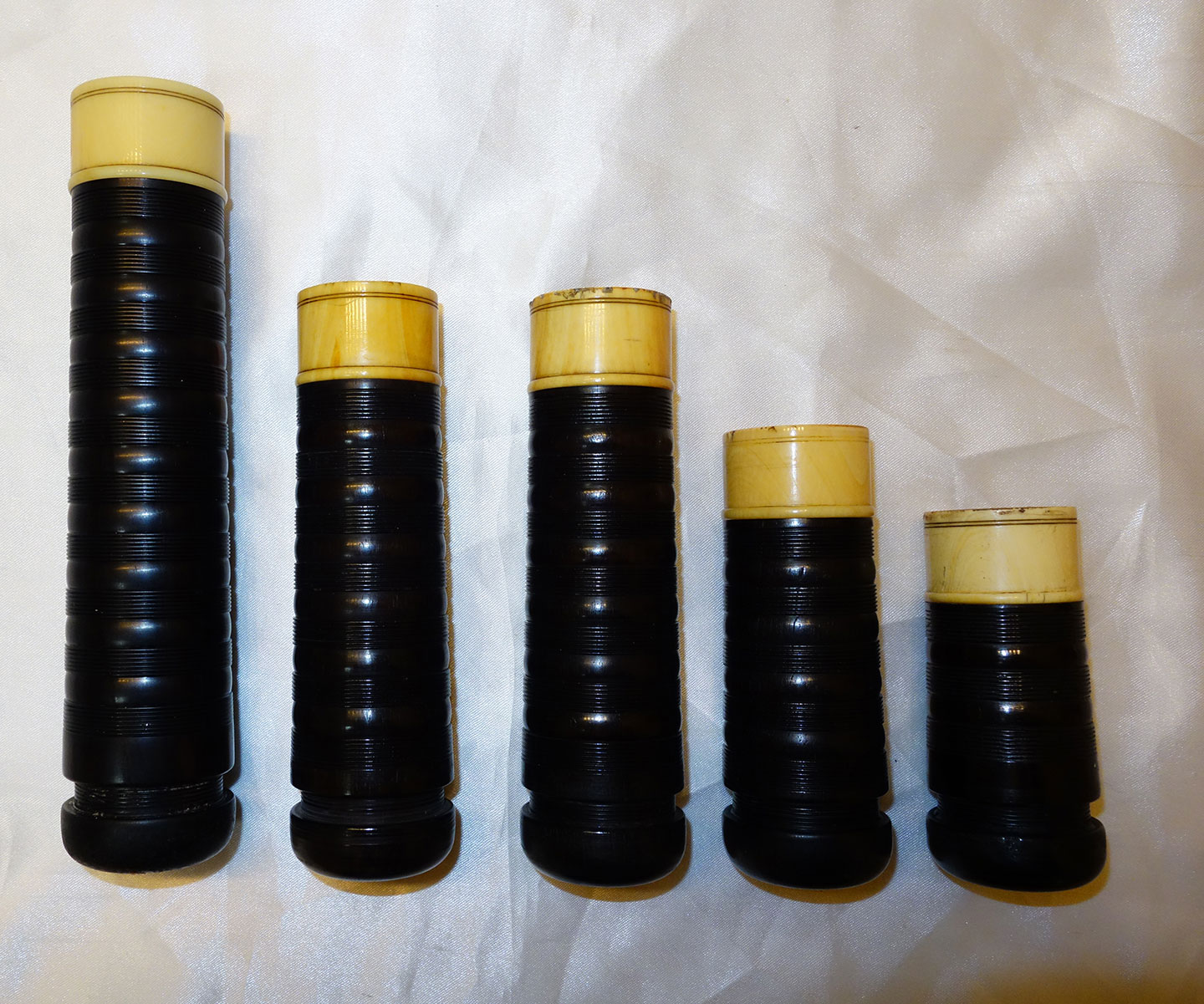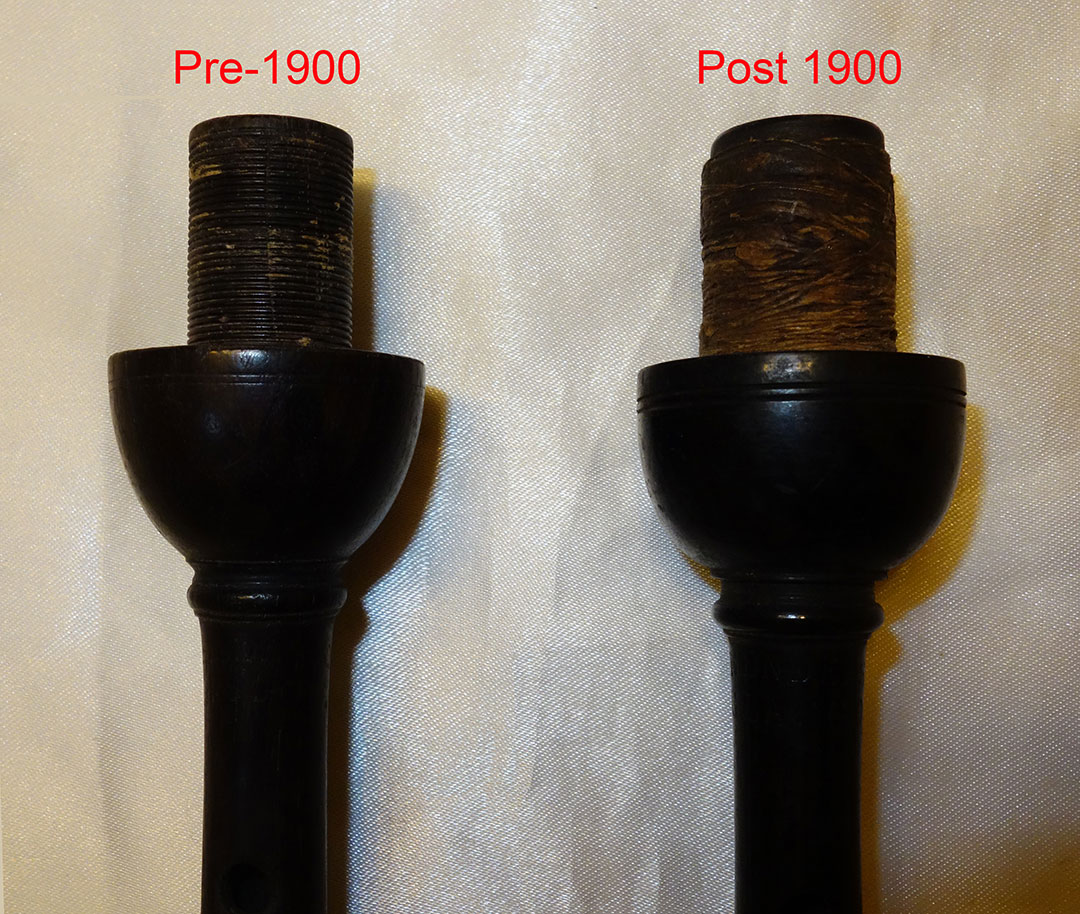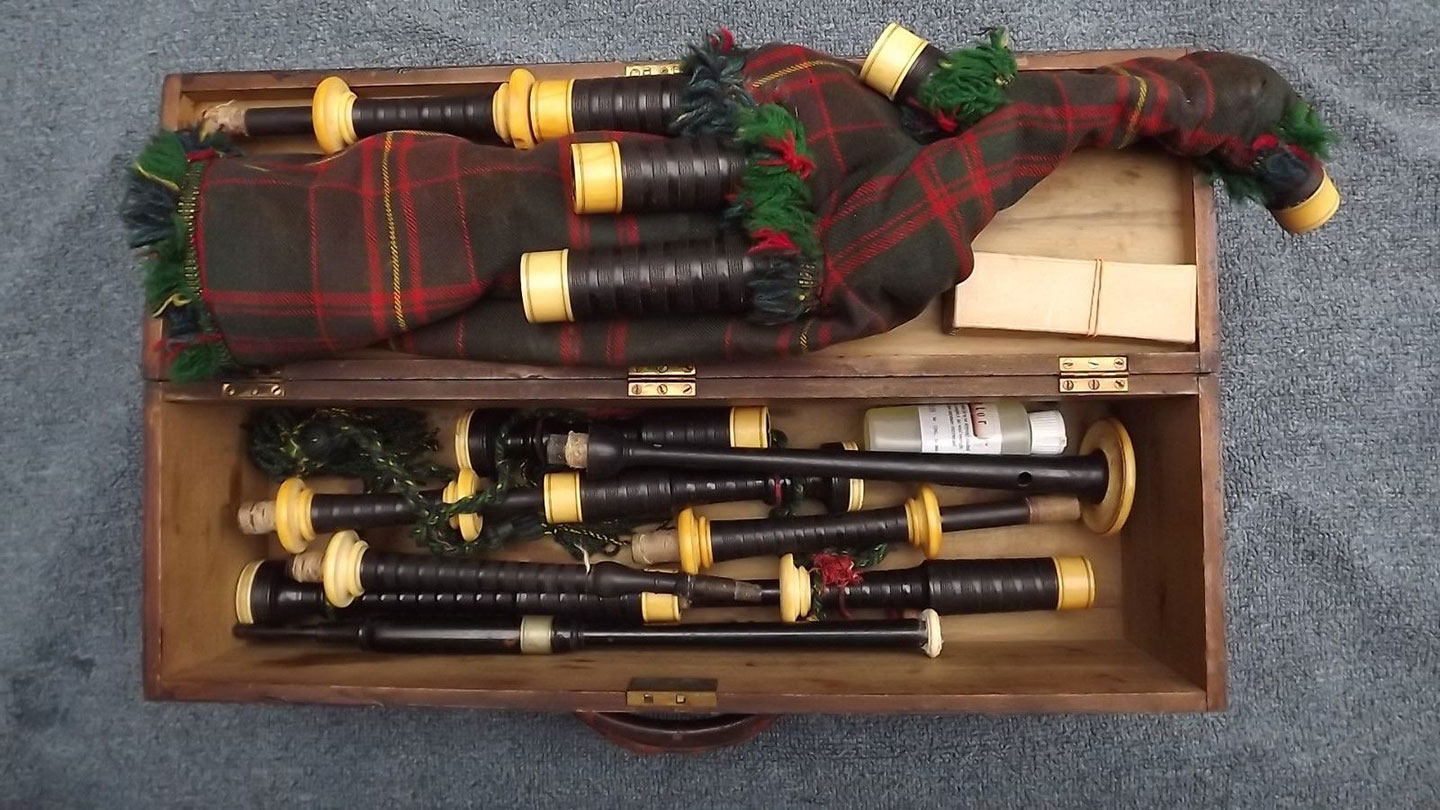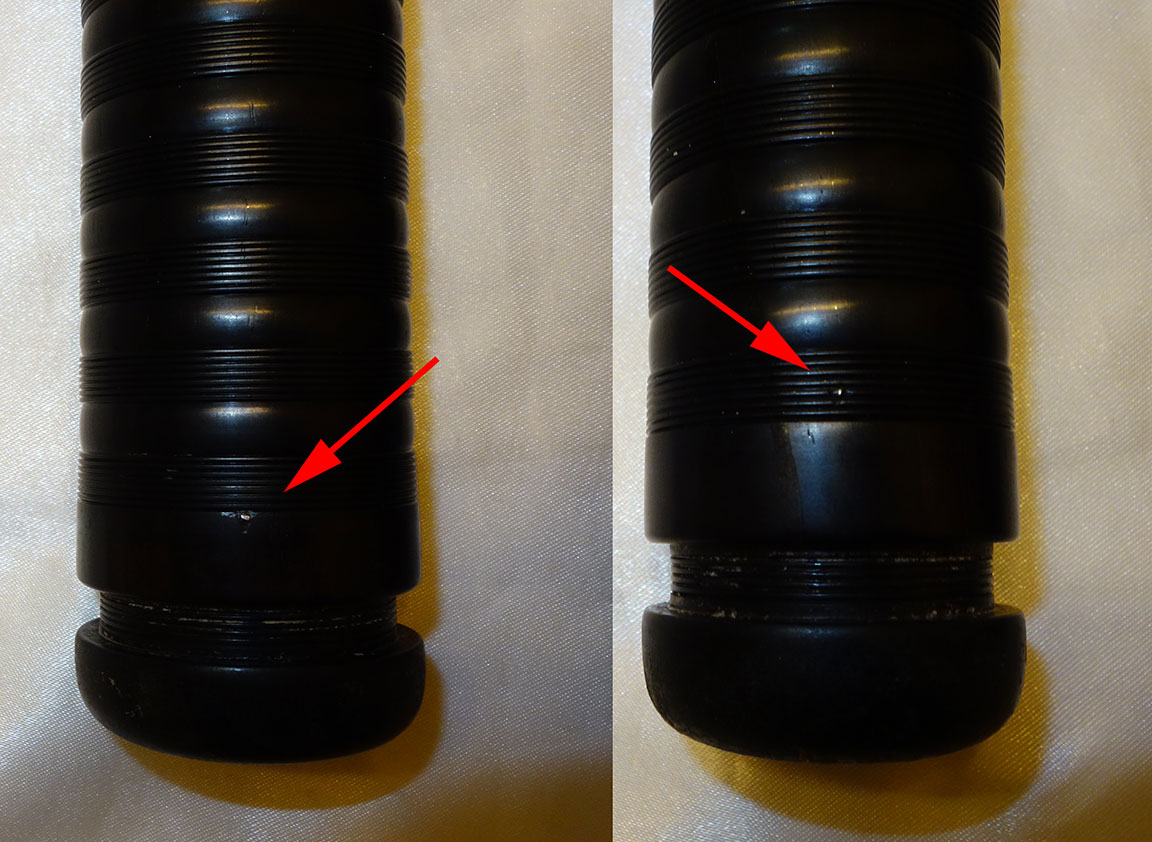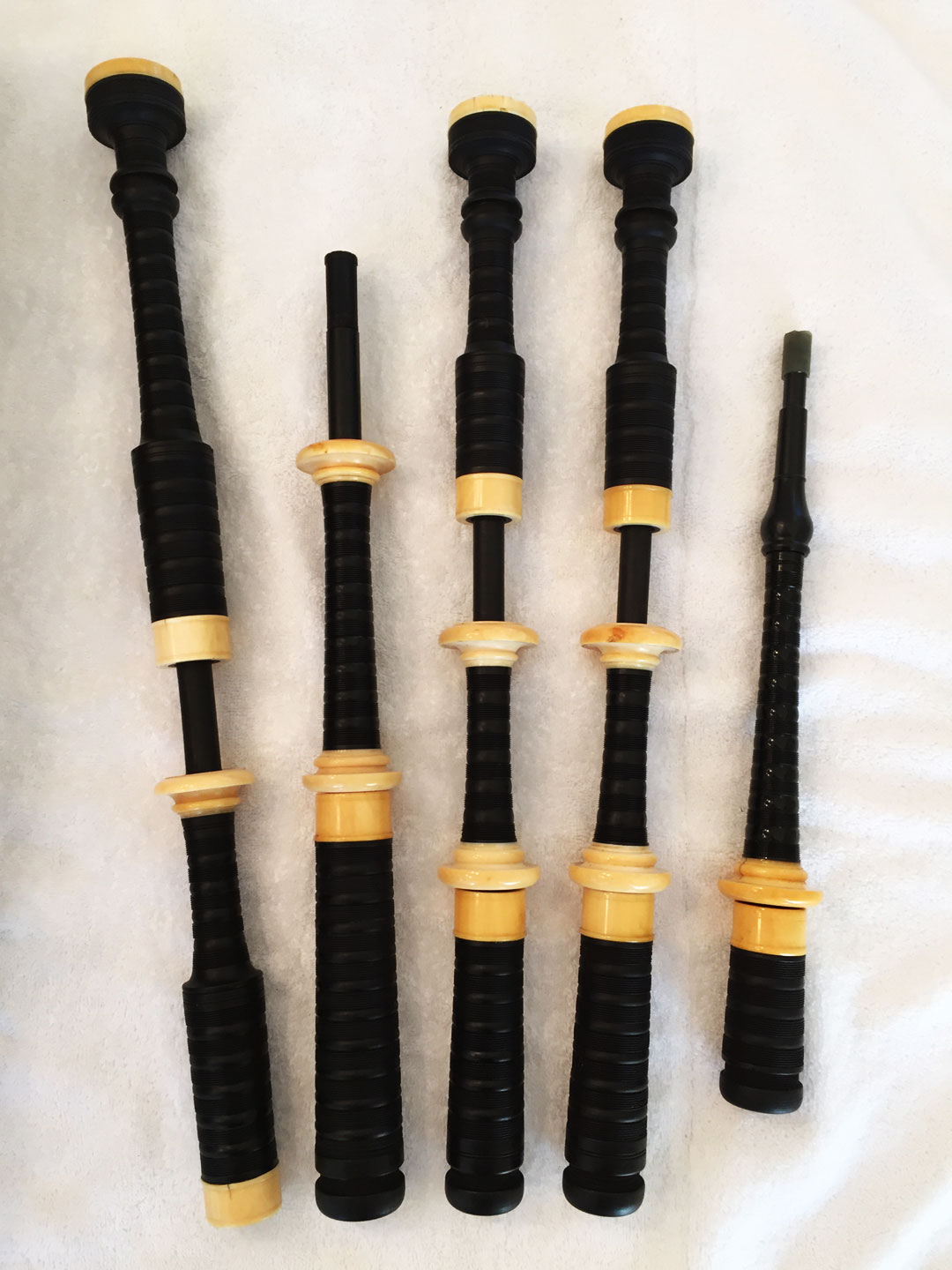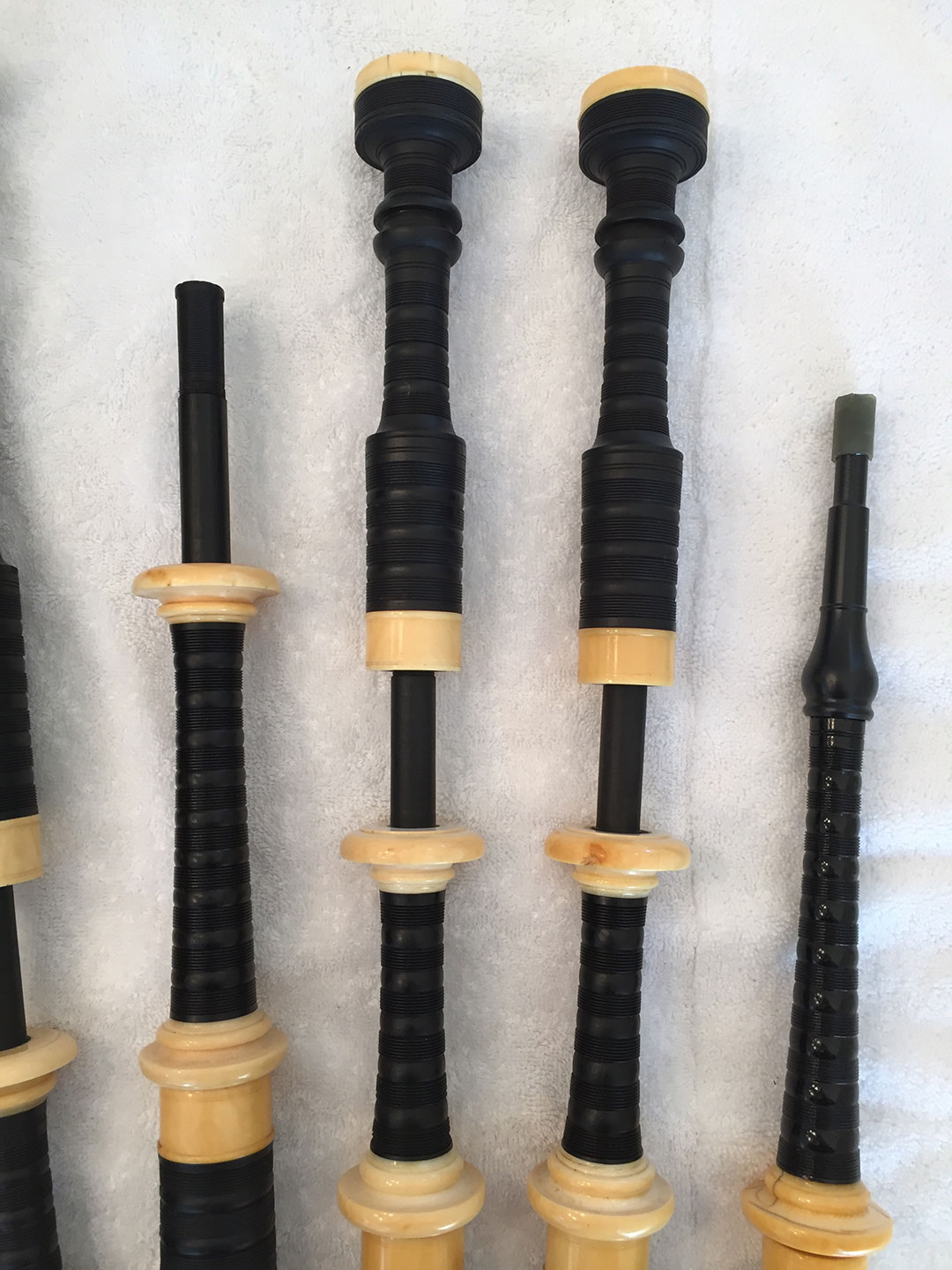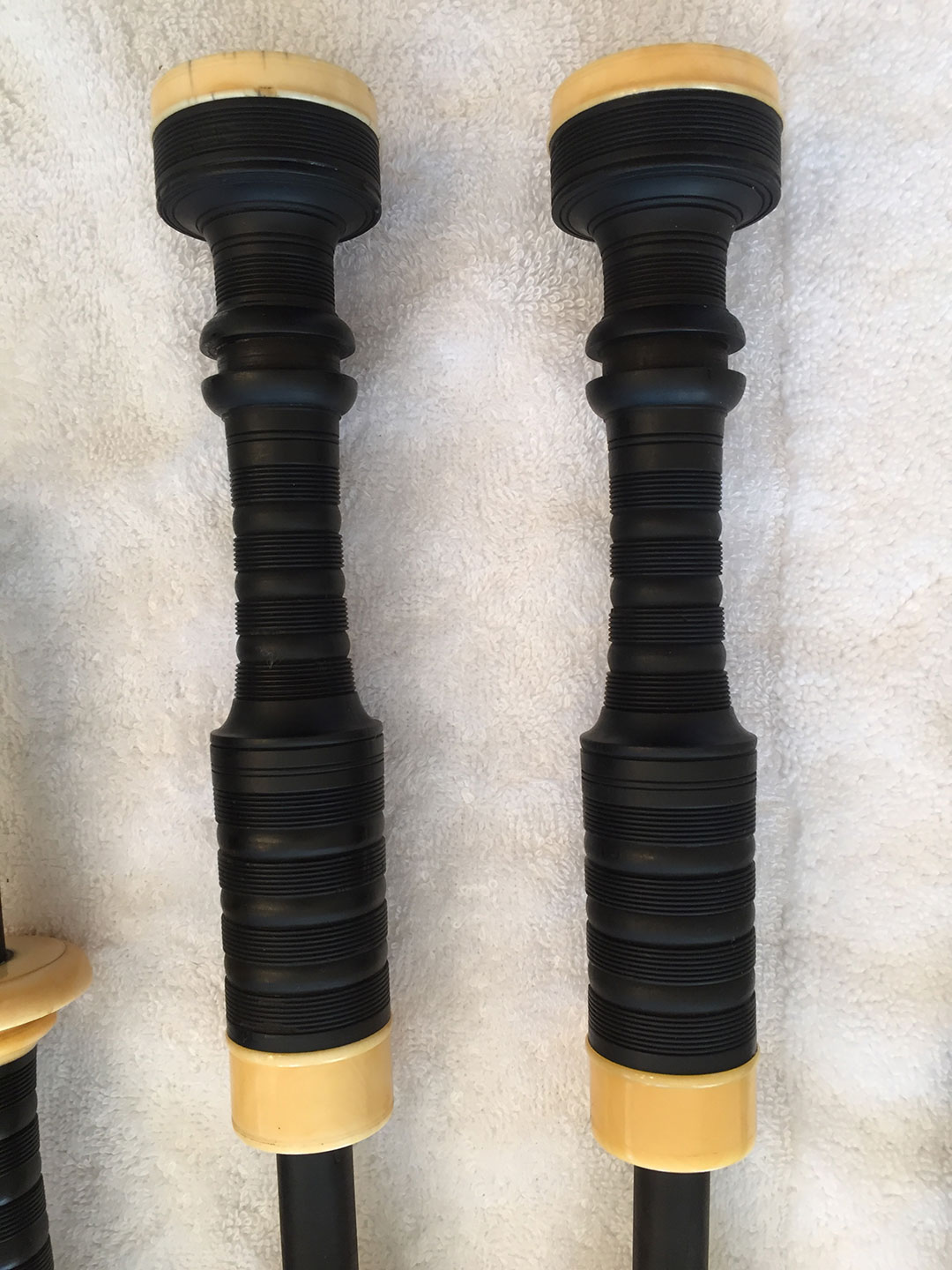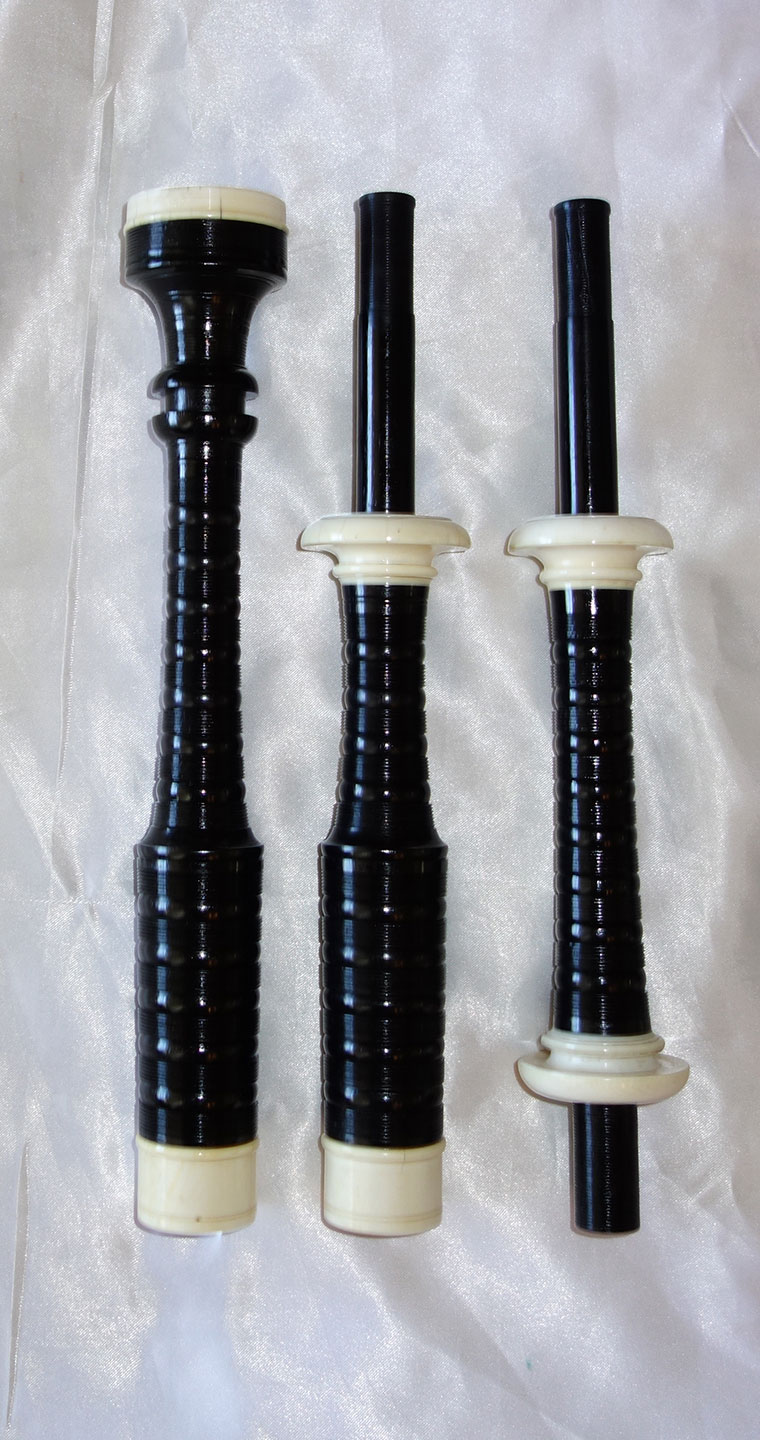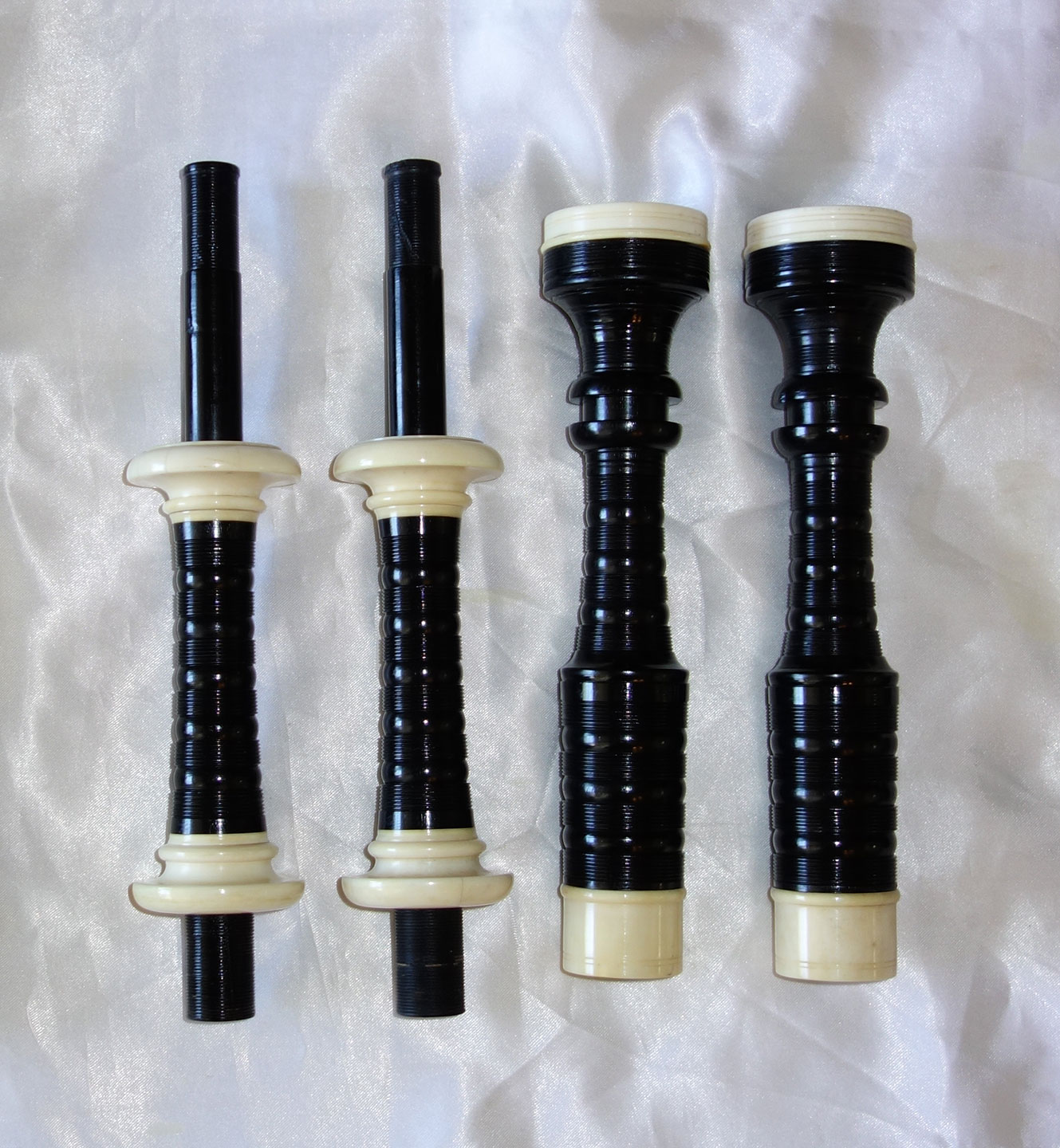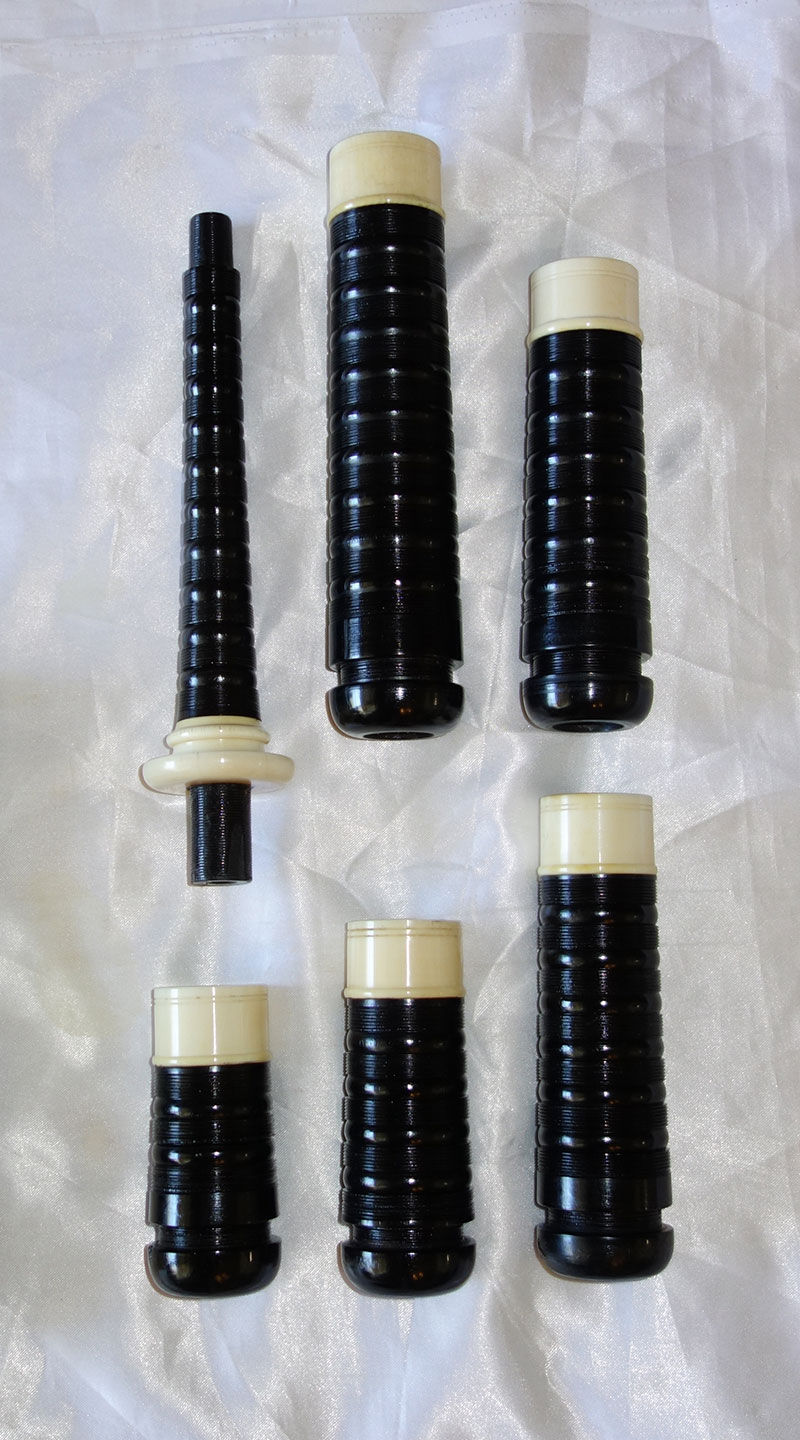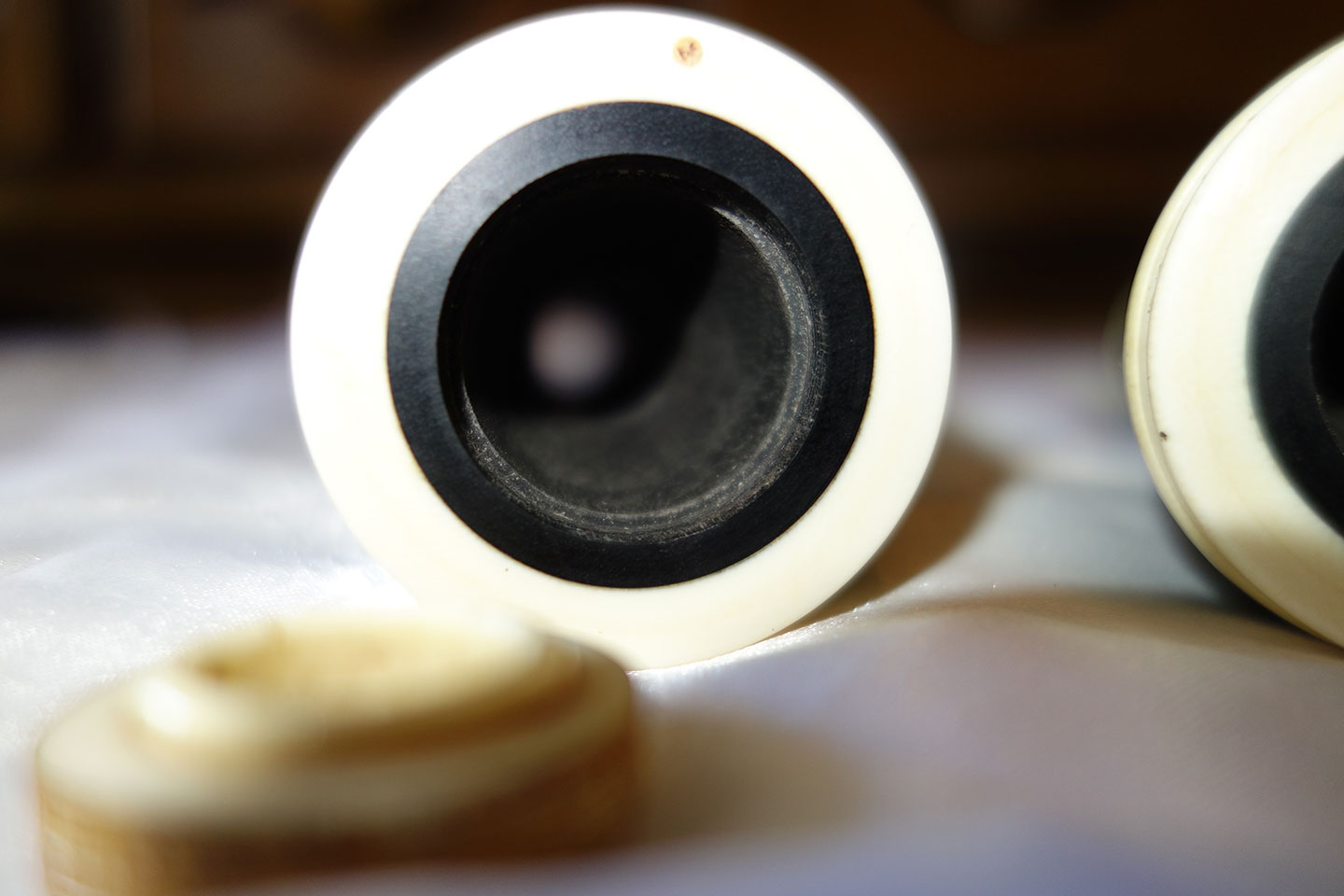It has been challenging to piece together the Henderson history as told by the instruments that remain with us today. Often times, the stated age of a Henderson bagpipe is inaccurate simply because there is so little reliable information. I have recently been very fortunate to have encountered some very early Henderson bagpipes and offer this information up to the reader here.
Good friend Don Bradford acquired the bagpipe pictured immediately below. Along with the bagpipe came the original receipt, in Peter's hand and signed by him on May 1st, 1895. This is stunning and an incredible artifact.
Good friend Don Bradford acquired the bagpipe pictured immediately below. Along with the bagpipe came the original receipt, in Peter's hand and signed by him on May 1st, 1895. This is stunning and an incredible artifact.
Henderson - Pre-1900
When I'm looking as Don's Henderson, several details catch my eye. The most notable is the flat area just below the cord guides on the tenor drones. This is a detail that appears to have gotten smaller following 1900 and disappeared altogether sometime around 1910. Now Don's Henderson doesn't have this detail on the bass drone. I don't know whether this signaled a change in design or perhaps was missing for other reasons.
The Henderson bagpipe to the right came to me in original condition needing only a bit of TLC. Unlike Don's bagpipe, this Henderson was made in African Blackwood. The earliest reported Henderson bagpipe made of ABW was in 1882 for William MacLeod of the Govan Police Pipe Band. This bagpipe eventually became the property of PM Willie Gray. ABW first appeared on the Henderson price list in 1900 at a premium of 10 shillings.
This bagpipe has more than a couple of secrets. If you look closely at the bottom of the bass drone stock, you'll see the remnants of tiny nails that probably held a plaque or shield at one time. Considering when it was made, it is entirely possible that this was a presentation set.
This bagpipe lines up almost perfectly with the 1895 Henderson above.
This bagpipe has more than a couple of secrets. If you look closely at the bottom of the bass drone stock, you'll see the remnants of tiny nails that probably held a plaque or shield at one time. Considering when it was made, it is entirely possible that this was a presentation set.
This bagpipe lines up almost perfectly with the 1895 Henderson above.
The bagpipes directly above and to the right are consistent with very early Henderson bagpipes, although I suspect that they were made between 1900 and WWI. I believe that the rich, majestic sound of early Henderson bagpipe can be attributed, in part, to the deep conical bell bore. Makers, in general, seem to move away from this following WWI for reasons unknown.


